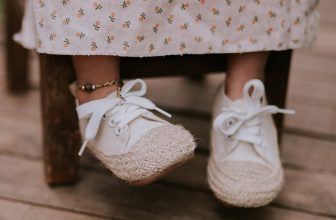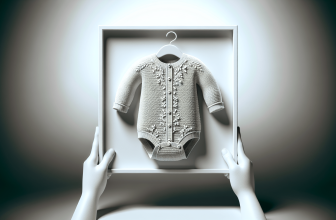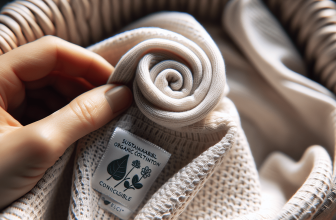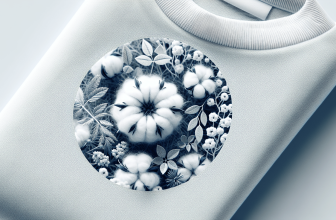You’ve probably spent a lot of time carefully selecting adorable baby clothes for your little one, but did you know that these tiny garments play a significant role in your child’s development? The clothes we choose for our babies not only keep them comfortable and happy, but they also have an impact on their sensory experience, motor skills development, and overall emotional well-being. In this article, we will explore the fascinating ways in which baby clothes contribute to the growth and development of your precious bundle of joy.
This image is property of images.unsplash.com.
Physical Development
Importance of proper clothing for movement and mobility
Choosing the right clothing for your baby is essential for promoting their physical development. Loose and comfortable clothing allows them to move freely and explore their environment. Restrictive or tight clothing can hinder their mobility and limit their ability to crawl, roll, and reach for objects. It is important to select clothes that allow for natural movement and provide enough space for their growing bodies.
Effect of clothing on sensory experiences and motor skills
Baby clothes play a significant role in shaping your little one’s sensory experiences and motor skills. The fabrics, textures, and weights of their clothing can provide different sensations against their skin, which contributes to their sensory development. Soft fabrics, such as cotton or bamboo, can provide a pleasant tactile experience and enhance their sense of touch. Additionally, clothing with different textures and patterns can stimulate their senses and help them develop their fine motor skills as they explore and manipulate the fabric.
Influence of clothing on gross and fine motor development
The clothing your baby wears can influence their gross and fine motor development. For example, bulky or heavy clothing may make it more difficult for them to coordinate their movements and develop their gross motor skills, such as crawling or walking. On the other hand, lightweight and flexible clothing allows for greater freedom of movement and facilitates the development of these skills. Similarly, clothing with buttons, zippers, and snaps can encourage the development of their fine motor skills as they learn to manipulate and fasten their clothing.
Cognitive Development
Stimulation through colors, patterns, and textures
Colorful and patterned baby clothes can provide visual stimulation and contribute to your baby’s cognitive development. Babies are naturally attracted to bright colors and high-contrast patterns, which can captivate their attention and help improve their visual tracking skills. By wearing clothes with different colors, patterns, and prints, your baby can also begin to recognize and differentiate between various visual stimuli, further enhancing their cognitive abilities.
Exploration and problem-solving through different types of clothing
Clothing with different closures, such as buttons, snaps, and Velcro, can provide opportunities for your baby to explore and problem-solve. As they attempt to fasten or unfasten these closures, they engage in active exploration and develop their problem-solving skills. This hands-on experience allows them to learn cause and effect, spatial awareness, and refine their hand-eye coordination.
Role of clothing in developing object permanence
Baby clothes can also play a role in developing your baby’s understanding of object permanence. Object permanence refers to the concept that objects continue to exist even when they are out of sight. Dressing and undressing your baby with different clothes can help them develop this understanding as they witness the disappearance and reappearance of various clothing items. By seeing that clothes can be taken off and put back on, they begin to grasp the idea that objects have a permanent existence, even when they are not visible.
Emotional Development
Comfort and security provided by appropriate clothing
Appropriate clothing can provide your baby with comfort and a sense of security, supporting their emotional development. Soft and cozy fabrics can create a soothing and nurturing environment for your baby, promoting feelings of warmth and contentment. By wearing clothes that fit well and feel comfortable against their skin, your baby can experience a sense of security, which helps foster a positive emotional bond with their clothing and the world around them.
Expression of personal style and identity
Even at a young age, babies can begin to express their personal style and identity through the clothes they wear. As they grow older, they may develop preferences for certain colors, patterns, or styles of clothing. Allowing your baby to have some choice in their clothing can promote their sense of autonomy and self-expression, which are important aspects of their emotional development. By respecting their preferences and encouraging their self-expression, you can further support their emotional well-being.
Influence of clothing choices on self-esteem and body image
Clothing choices can have an impact on your baby’s self-esteem and body image, even at a young age. As they grow older, they may start to develop awareness of their appearance and how they perceive themselves. Wearing clothes that make them feel confident and comfortable in their own bodies can help foster a positive body image and boost their self-esteem. It is important to choose clothes that make your baby feel good about themselves and promote a healthy body image from an early age.
Social Development
Role of clothing in cultural and social identity formation
Baby clothes can play a significant role in forming your baby’s cultural and social identity. Different cultures often have distinct clothing styles, colors, and patterns that reflect their traditions and values. By dressing your baby in culturally-appropriate clothing, you can help them connect with their heritage and develop a sense of belonging to their cultural community. Additionally, clothing that represents their family’s social and economic status can influence their perception of social identity.
Opportunities for social interaction and imitation through dressing up
Dressing up your baby in different outfits can provide opportunities for social interaction and promote their imitation skills. Sharing the experience of dressing up with family members or friends can create moments of joy and connection. It allows your baby to observe and imitate the actions of others, fostering their social and cognitive development. Through dressing up, they can learn about social customs, roles, and engage in pretend play.
Expression of gender and societal norms through baby clothes
Baby clothes often reflect societal norms and expectations related to gender. Colors, prints, and styles are often associated with either boys or girls, reinforcing gender stereotypes from an early age. While it is important to provide your baby with a variety of clothing options regardless of their gender, being aware of the influence of societal norms can help you make conscious choices that support their individuality and encourage open-mindedness.
This image is property of images.unsplash.com.
Language Development
Introduction of vocabulary related to clothing
Baby clothes provide a tangible context for introducing vocabulary related to clothing items. As you dress your baby, you can name the different clothing pieces, such as shirts, pants, socks, or hats. Repeating these words consistently during dressing routines helps your baby develop their receptive language skills and build their vocabulary. Over time, they will start to recognize and associate the words with the corresponding clothing items, strengthening their understanding of language.
Use of clothing as a tool for language learning and categorization
Clothing can also be used as a tool for language learning and categorization. You can engage your baby in conversation by asking questions about their clothing choices, such as “Do you want to wear your blue shirt or the green one?” This encourages them to make choices, express their preferences, and develop their expressive language skills. Sorting and categorizing clothing items based on different characteristics, such as size, color, or type, can also help them understand and practice concepts of categorization.
Role of clothing in understanding concepts such as size, color, and texture
By interacting with a variety of clothing items, your baby can develop an understanding of concepts such as size, color, and texture. They can observe and compare different sizes of clothing items, helping them grasp the concept of relative sizes. Similarly, discussing the colors and textures of their clothes during dressing routines allows them to associate words with these sensory experiences, expanding their understanding of the world around them.
Sensory Development
Stimulation of the senses through different fabrics and textures
Baby clothes with different fabrics and textures provide valuable sensory stimulation for your little one. Soft fabrics, like cotton or bamboo, offer a gentle touch against their skin, enhancing their tactile sensory experiences. Clothes with various textures, such as ribbed fabrics or fuzzy trims, introduce new tactile sensations and promote sensory exploration. By wearing clothing with different fabrics and textures, your baby’s sensory system is stimulated, aiding in their overall sensory development.
Role of clothing in promoting body awareness
The clothes your baby wears can contribute to their body awareness and proprioception—the sense of their body’s position and movement. Clothing that fits well and hugs the body gives your baby a sense of where their body is in space, which is crucial for their gross motor development. As they move their arms and legs within the confines of their clothing, they become more aware of their body’s range of motion and develop a greater understanding of their physical capabilities.
Development of sensory integration through clothing choices
Choosing clothing that supports sensory integration is essential for your baby’s development. Sensory integration involves the brain’s ability to receive, process, and respond to sensory input from the environment. By selecting clothing with different sensory qualities, such as smooth, rough, or textured fabrics, you can promote sensory integration. This helps your baby develop the ability to organize and make sense of the sensory information they receive, contributing to their overall sensory processing skills.
This image is property of images.unsplash.com.
Independence and Self-Help Skills
Role of baby clothes in promoting independence in dressing and undressing
As your baby grows, baby clothes play a crucial role in promoting their independence in dressing and undressing. Choosing clothes that are easy to put on and take off, such as those with elastic waistbands or stretchy fabrics, allows your baby to practice these self-help skills. They begin to learn how to manipulate clothing items and develop the dexterity needed for independent dressing. Providing opportunities for them to dress and undress themselves fosters a sense of accomplishment, boosts their self-confidence, and encourages their self-help skills.
Development of self-help skills through clothing fastening and manipulation
Baby clothes with different fasteners, such as buttons, zippers, or snaps, offer opportunities for your baby to develop their self-help skills. As they learn to manipulate these closures, they refine their fine motor skills, hand-eye coordination, and problem-solving abilities. Encouraging and supporting their attempts to fasten and unfasten their clothing items fosters their sense of independence and teaches them valuable skills they will continue to use as they grow older.
Importance of age-appropriate clothing choices for skill development
Selecting age-appropriate clothing is essential for supporting your baby’s skill development. As they reach different milestones, such as crawling, walking, or using their hands, their clothing needs may change. For example, loose clothing may be suitable for crawling, allowing for unrestricted movement, while shoes with proper support are important for walking. Making informed choices about their clothing based on their developmental stage ensures their comfort, safety, and supports their ongoing skill development.
Environmental Awareness
Introduction of sustainable and eco-friendly baby clothing options
Baby clothing presents an opportunity to introduce sustainable and eco-friendly choices from an early age. Opting for clothing made from organic materials or produced using environmentally-friendly processes can promote environmental awareness. By selecting sustainable options, you contribute to a more eco-conscious lifestyle and teach your baby the importance of making environmentally responsible choices.
Role of clothing in understanding weather and seasonal changes
Choosing clothing appropriate for different weather conditions and seasons helps your baby develop an understanding of weather patterns and seasonal changes. By dressing them in lighter fabrics during hot weather and layering them with warmer clothes during colder months, you provide a sensory experience that aligns with the weather they are experiencing. This helps them associate certain clothing choices with specific weather conditions, teaching them to adapt to their environment and fostering their environmental awareness.
Promotion of environmental consciousness through clothing choices
The clothing choices you make for your baby can promote environmental consciousness and sustainability. Opting for high-quality clothing that can be passed down or repurposed for future siblings or other families contributes to reducing waste. You can also support sustainable practices by choosing to buy from ethical and eco-friendly clothing brands. By incorporating these choices into your baby’s wardrobe, you instill the importance of environmental consciousness and sustainable living from an early age.
Safety and Protection
Importance of appropriate clothing for temperature regulation
Appropriate clothing plays a vital role in ensuring your baby’s safety and comfort, especially when it comes to temperature regulation. Dressing them in clothing suitable for the current temperature can help prevent overheating or feeling too cold. Layers of clothing can be added or removed as needed, providing flexibility to adjust to changing weather conditions. It is important to monitor their comfort levels and dress them appropriately to maintain their body temperature within a safe range.
Role of clothing in protecting against environmental hazards
Baby clothes also serve as a protective barrier against environmental hazards. Clothing that covers exposed skin can help shield your baby from harmful UV rays when spending time outdoors. Additionally, long-sleeved shirts and pants can provide a barrier against insects and prevent potential bites or stings. Choosing appropriate clothing that minimizes their exposure to potential hazards helps keep your baby safe during their exploration of the world.
Promotion of safe sleep practices through suitable sleepwear
Safe sleep practices are crucial for your baby’s well-being, and appropriate sleepwear contributes to creating a safe sleep environment. Clothes designed specifically for sleep, such as sleep sacks or one-piece pajamas, can help prevent the risk of suffocation and promote safe sleep positions. These sleepwear options eliminate the need for blankets or loose bedding in the crib, reducing the risk of entanglement or accidental suffocation. By putting your baby in suitable sleepwear, you can ensure they have a safe and comfortable sleep experience.
Parent-Child Bonding
Selection and matching of baby clothes as a bonding activity
The process of selecting and matching baby clothes can be a joyful bonding activity between you and your little one. Involving your baby in choosing their clothes, even at a young age, allows them to participate in decision-making and fosters their sense of autonomy. Engaging in this activity together strengthens the parent-child bond and deepens the connection between you. It also offers opportunities for gentle touch, affection, and shared excitement, creating moments of joy and love.
Expression of love and care through clothing choices
Choosing and dressing your baby in adorable, comfortable clothes can be a way to express your love and care for them. The thought and care put into selecting their clothing can make them feel special and cherished. By ensuring their comfort and well-being through appropriate clothing choices, you communicate your love and nurture their emotional development. Each clothing item becomes a symbol of your affection, reinforcing the loving bond between you and your baby.
Opportunities for shared experiences and memories through baby clothes
Baby clothes can hold sentimental value and become cherished keepsakes that evoke beautiful memories. Each outfit your baby wears becomes a memento of their growth and milestones. By keeping certain clothes that hold sentimental value, you can create a collection of cherished items that represent precious moments in your baby’s life. Looking back at these clothing items can evoke nostalgia and allow you to share stories and memories with your child as they grow older, strengthening the bond between you and creating a lasting legacy.
In conclusion, baby clothes play a significant role in child development across various domains. The right clothing choices can positively impact your baby’s physical, cognitive, emotional, social, and language development. They offer comfort, sensory stimulation, and opportunities for exploration and learning. By carefully considering their clothing options, you can support their development, nurture their individuality, and create meaningful experiences that heighten the parent-child bond. As you dress your baby, remember the important role that baby clothes play in shaping their journey of growth and development.











